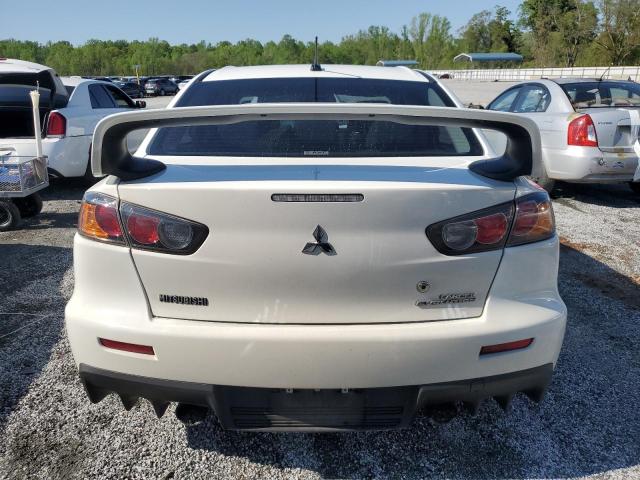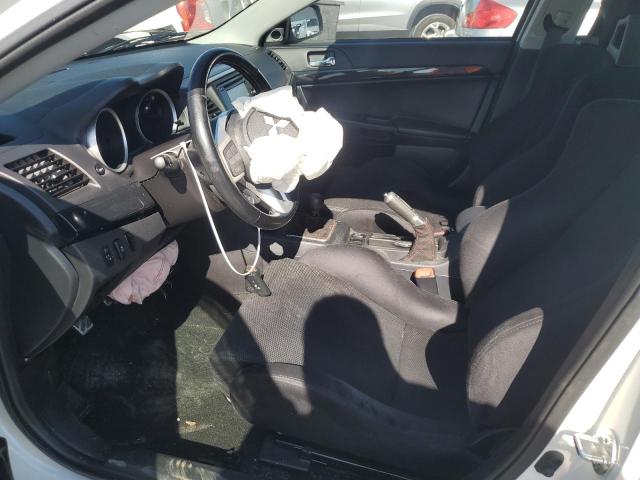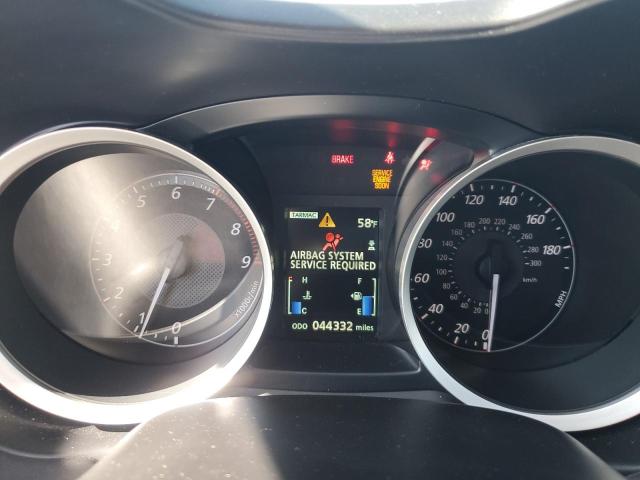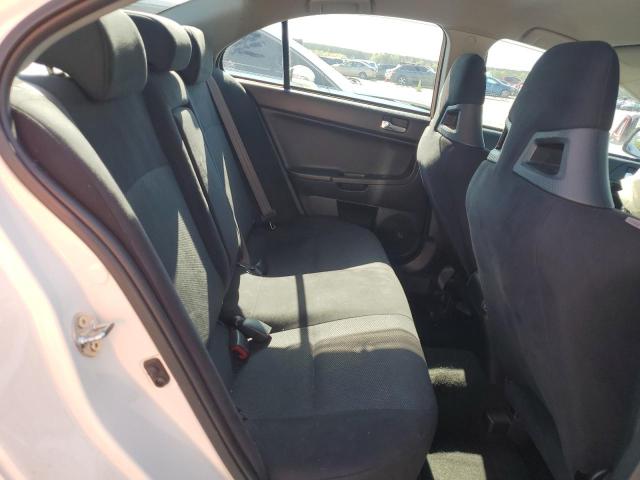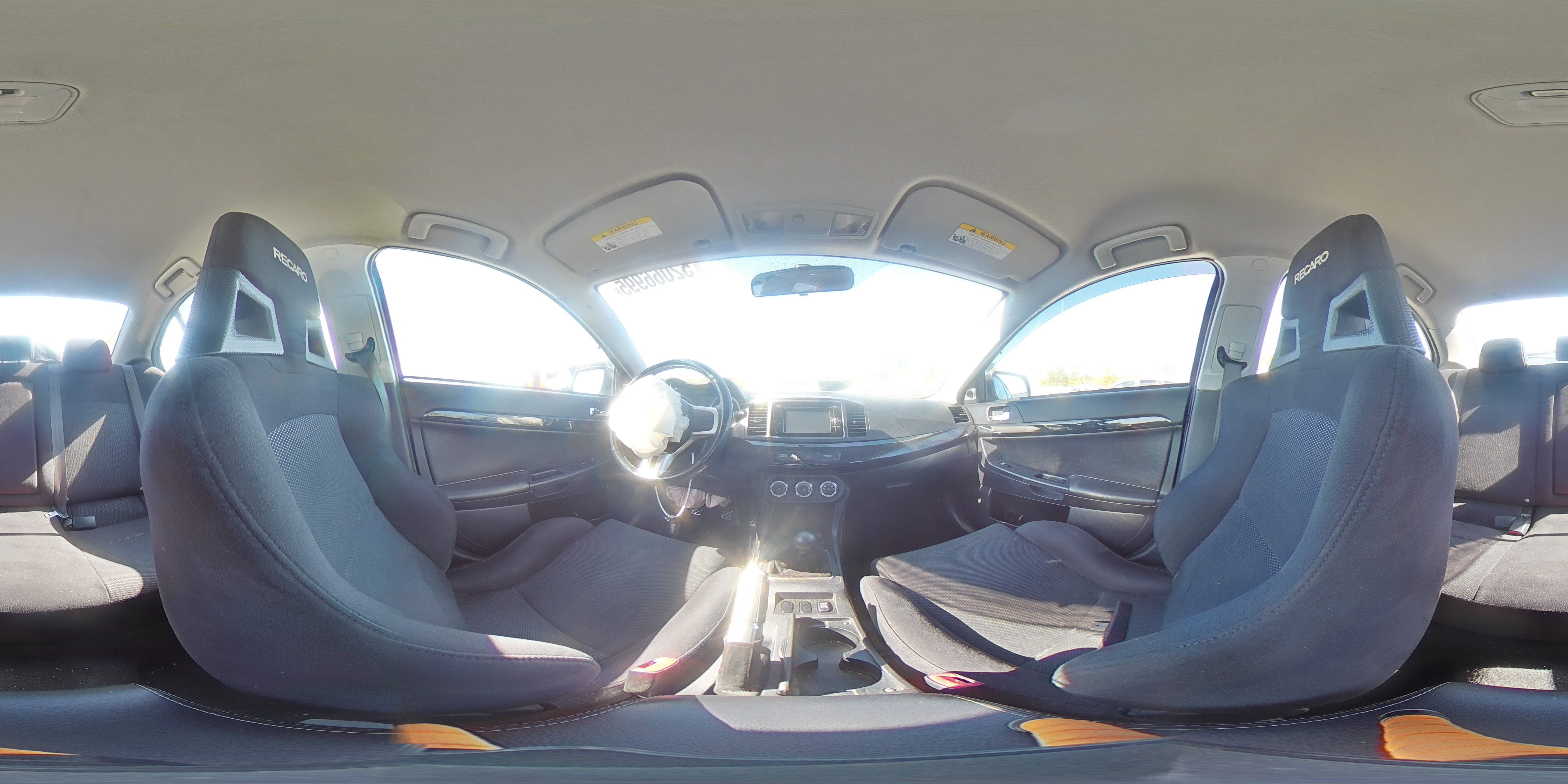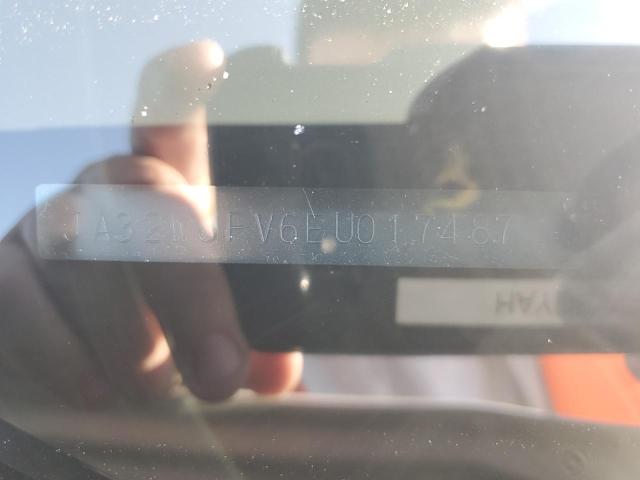2014 MITSUBISHI LANCER EVOLUTION | JA32W8FV6EU017487
 ❯
❯
Specifications
3
~$40,000
Engine: 2.0L turbocharged inline-four
Torque: 414 Nm
0–100 km/h: ~4.5 s
The Mitsubishi Lancer Evolution X Final Edition marked the last and most refined chapter in the Evolution saga. With 414 Nm of torque and a 0–100 km/h time of just 4.5 seconds, it remained one of the most potent four-cylinder performance sedans of its time. The 2.0L turbocharged 4B11T engine featured reinforced internals and improved cooling over earlier versions, producing its power with an aggressive, laggy but rewarding turbo surge. Whether paired with the 5-speed manual (GSR and Final Edition) or the lightning-fast 6-speed dual-clutch SST (MR), the Evo offered precise control over its explosive delivery.
Where the Evo truly shined was in its chassis and handling. The Super All-Wheel Control (S-AWC) system with active yaw control distributed torque with mind-bending precision, allowing the car to rotate mid-corner under throttle. The front MacPherson struts and rear multi-link suspension were stiff, feedback-rich, and track-ready, while Bilstein dampers and Eibach springs in higher trims sharpened dynamics even further. Brembo brakes provided consistent, fade-resistant stopping power. Combined with a near-perfect weight balance and razor-sharp steering, the Evo X didn’t just corner—it attacked.
The Evo X was not a refined cruiser—it was raw, mechanical, and unapologetically focused. Noise levels were high, ride quality was harsh, and the interior was functional at best. But those compromises gave way to a unique character: a motorsport-derived machine for the road, where every input had an immediate and visceral consequence. It remains one of the last analog performance sedans of the 2000s, engineered for drivers who prioritize feedback over polish.
Body Styles
The Lancer Evolution X was available exclusively as a four-door sedan with a wide-body stance, functional aero, and aggressive detailing. Compared to the standard Lancer, the Evo featured widened fenders, a vented aluminum hood, prominent rear diffuser, and a large rear wing (on GSR and Final Edition trims). The car’s proportions were defined by a short front overhang, upright greenhouse, and flared wheel arches that hinted at its rally heritage. Measuring roughly 4.5 meters in length, the Evo X struck a purposeful pose on the road, emphasizing width and stance over elegance. With a low ride height, broad track, and large 18-inch wheels tucked under its arches, it looked as fast as it drove.
Model Name Meaning (Manufacturer)
“Lancer Evolution” originated as a performance version of Mitsubishi’s Lancer sedan, with “Evolution” signifying its continuous motorsport-driven development. By the tenth generation, “Evolution” had become a standalone identity, representing a purebred rally car homologated for the street. The name reflected its roots in WRC competition and its focus on evolution through engineering refinement.
Model Name Meaning (Languages)
The word “Evolution” carries literal meaning across languages, symbolizing progress, refinement, and development. It suggests that each generation of the car is not just a redesign, but an iterative improvement over the last. This semantic depth perfectly aligns with the Evo’s identity as a continuously honed performance tool. Phonetically, the term also feels technical and scientific—befitting its precision-engineered character.
Body & Interior Colors and Rims
The Evo X was available in a range of aggressive yet purposeful exterior colors, with rally-inspired shades like Wicked White, Octane Blue, and Rally Red standing out. More subdued tones included Mercury Gray, Phantom Black, and Labrador Black Pearl, often chosen by enthusiasts looking to highlight the car’s stealth and performance over flash. Final Edition models added exclusive touches such as unique badging and a numbered production plaque. All paint finishes emphasized the Evo’s functional design—flat surfaces, aerodynamic sculpting, and sharp body lines.
Inside, the Evo was minimal and business-like. Most trims featured black cloth or synthetic suede Recaro sport seats with heavy bolstering, red contrast stitching, and simple analog gauges. The MR trim introduced leather and aluminum trim accents, while the Final Edition combined functional design with subtle red interior details and stitched logos. Hard plastics dominated the dash and door panels, and the center stack prioritized function over flair, with large climate controls and a basic infotainment system. There were no luxury pretensions—only materials and controls that suited high-speed driving and long track days.
The wheels across all trims were 18-inch lightweight forged or cast alloys from Enkei or BBS, depending on trim. Designs ranged from split-spoke to mesh patterns, finished in silver, gunmetal, or gloss black. The wheels were wrapped in high-performance summer tires, and their wide offset and aggressive fitment contributed to the Evo’s iconic rally stance.
Top Expensive Options
- Recaro Leather/Suede Sport Seats: $1,800
- Rockford Fosgate 9-Speaker Audio with Subwoofer: $1,200
- 6-Speed Twin-Clutch SST Transmission (MR): $1,500
- BBS Forged Aluminum Wheels (MR/Final Edition): $2,000
- Bilstein Dampers with Eibach Springs: $1,400
- Navigation System with Touchscreen Display: $900
- Aluminum Shift Knob and Pedals: $400
- HID Headlights with Auto-Leveling: $600
- Large Rear Wing Spoiler (GSR/Final): $700
- Red-stitched Final Edition Interior Package: $500
vs Competitors
The Evo X competed directly with the Subaru WRX STI, Ford Focus RS (latter years), and premium hot sedans like the BMW 335i M Sport. Compared to the STI, the Evo offered superior turn-in precision, sharper AWD logic, and a more communicative chassis. Against the Focus RS, it lacked interior tech but delivered a more analog, mechanical experience. While it couldn't match the refinement or straight-line speed of some luxury sedans, it offered unmatched cornering ability, driver feedback, and confidence-inspiring AWD traction. For purists, the Evo X was the more focused choice—more raw, more connected, and less diluted by comfort or complexity.
Fun Fact
The Lancer Evolution X Final Edition was the last of its kind, with only 1,600 units produced for the U.S. market, each individually numbered. It marked the end of an era for Mitsubishi, which exited the high-performance sedan segment to focus on crossovers. Today, the Final Edition is increasingly collectible, seen as the ultimate expression of a legendary rally lineage that spanned over two decades and ten generations.
Lot Details
-
Sale Date23/May/2025
-
Lot Number52066995
-
Sale document
-
Location
-
Odometer44,332 miles (71,345 km)
-
Primary Damage:FRONT END
-
Fuel
-
Engine Type2.0L 4
-
Transmission
-
Drive Type
-
Color
Final Bid Mitsubishi Lancer Evolution (2014)
$16,900
$16,900
$16,900
Specifications
3
~$40,000
Torque:
0–100 km/h:
The Mitsubishi Lancer Evolution X Final Edition marked the last and most refined chapter in the Evolution saga. With 414 Nm of torque and a 0–100 km/h time of just 4.5 seconds, it remained one of the most potent four-cylinder performance sedans of its time. The 2.0L turbocharged 4B11T engine featured reinforced internals and improved cooling over earlier versions, producing its power with an aggressive, laggy but rewarding turbo surge. Whether paired with the 5-speed manual (GSR and Final Edition) or the lightning-fast 6-speed dual-clutch SST (MR), the Evo offered precise control over its explosive delivery.
Where the Evo truly shined was in its chassis and handling. The Super All-Wheel Control (S-AWC) system with active yaw control distributed torque with mind-bending precision, allowing the car to rotate mid-corner under throttle. The front MacPherson struts and rear multi-link suspension were stiff, feedback-rich, and track-ready, while Bilstein dampers and Eibach springs in higher trims sharpened dynamics even further. Brembo brakes provided consistent, fade-resistant stopping power. Combined with a near-perfect weight balance and razor-sharp steering, the Evo X didn’t just corner—it attacked.
The Evo X was not a refined cruiser—it was raw, mechanical, and unapologetically focused. Noise levels were high, ride quality was harsh, and the interior was functional at best. But those compromises gave way to a unique character: a motorsport-derived machine for the road, where every input had an immediate and visceral consequence. It remains one of the last analog performance sedans of the 2000s, engineered for drivers who prioritize feedback over polish.
Body Styles
The Lancer Evolution X was available exclusively as a four-door sedan with a wide-body stance, functional aero, and aggressive detailing. Compared to the standard Lancer, the Evo featured widened fenders, a vented aluminum hood, prominent rear diffuser, and a large rear wing (on GSR and Final Edition trims). The car’s proportions were defined by a short front overhang, upright greenhouse, and flared wheel arches that hinted at its rally heritage. Measuring roughly 4.5 meters in length, the Evo X struck a purposeful pose on the road, emphasizing width and stance over elegance. With a low ride height, broad track, and large 18-inch wheels tucked under its arches, it looked as fast as it drove.
Model Name Meaning (Manufacturer)
“Lancer Evolution” originated as a performance version of Mitsubishi’s Lancer sedan, with “Evolution” signifying its continuous motorsport-driven development. By the tenth generation, “Evolution” had become a standalone identity, representing a purebred rally car homologated for the street. The name reflected its roots in WRC competition and its focus on evolution through engineering refinement.
Model Name Meaning (Languages)
The word “Evolution” carries literal meaning across languages, symbolizing progress, refinement, and development. It suggests that each generation of the car is not just a redesign, but an iterative improvement over the last. This semantic depth perfectly aligns with the Evo’s identity as a continuously honed performance tool. Phonetically, the term also feels technical and scientific—befitting its precision-engineered character.
Body & Interior Colors and Rims
The Evo X was available in a range of aggressive yet purposeful exterior colors, with rally-inspired shades like Wicked White, Octane Blue, and Rally Red standing out. More subdued tones included Mercury Gray, Phantom Black, and Labrador Black Pearl, often chosen by enthusiasts looking to highlight the car’s stealth and performance over flash. Final Edition models added exclusive touches such as unique badging and a numbered production plaque. All paint finishes emphasized the Evo’s functional design—flat surfaces, aerodynamic sculpting, and sharp body lines.
Inside, the Evo was minimal and business-like. Most trims featured black cloth or synthetic suede Recaro sport seats with heavy bolstering, red contrast stitching, and simple analog gauges. The MR trim introduced leather and aluminum trim accents, while the Final Edition combined functional design with subtle red interior details and stitched logos. Hard plastics dominated the dash and door panels, and the center stack prioritized function over flair, with large climate controls and a basic infotainment system. There were no luxury pretensions—only materials and controls that suited high-speed driving and long track days.
The wheels across all trims were 18-inch lightweight forged or cast alloys from Enkei or BBS, depending on trim. Designs ranged from split-spoke to mesh patterns, finished in silver, gunmetal, or gloss black. The wheels were wrapped in high-performance summer tires, and their wide offset and aggressive fitment contributed to the Evo’s iconic rally stance.
Top Expensive Options
- Recaro Leather/Suede Sport Seats: $1,800
- Rockford Fosgate 9-Speaker Audio with Subwoofer: $1,200
- 6-Speed Twin-Clutch SST Transmission (MR): $1,500
- BBS Forged Aluminum Wheels (MR/Final Edition): $2,000
- Bilstein Dampers with Eibach Springs: $1,400
- Navigation System with Touchscreen Display: $900
- Aluminum Shift Knob and Pedals: $400
- HID Headlights with Auto-Leveling: $600
- Large Rear Wing Spoiler (GSR/Final): $700
- Red-stitched Final Edition Interior Package: $500
vs Competitors
The Evo X competed directly with the Subaru WRX STI, Ford Focus RS (latter years), and premium hot sedans like the BMW 335i M Sport. Compared to the STI, the Evo offered superior turn-in precision, sharper AWD logic, and a more communicative chassis. Against the Focus RS, it lacked interior tech but delivered a more analog, mechanical experience. While it couldn't match the refinement or straight-line speed of some luxury sedans, it offered unmatched cornering ability, driver feedback, and confidence-inspiring AWD traction. For purists, the Evo X was the more focused choice—more raw, more connected, and less diluted by comfort or complexity.
Fun Fact
The Lancer Evolution X Final Edition was the last of its kind, with only 1,600 units produced for the U.S. market, each individually numbered. It marked the end of an era for Mitsubishi, which exited the high-performance sedan segment to focus on crossovers. Today, the Final Edition is increasingly collectible, seen as the ultimate expression of a legendary rally lineage that spanned over two decades and ten generations.





